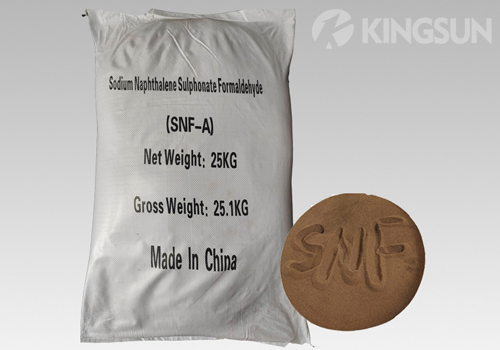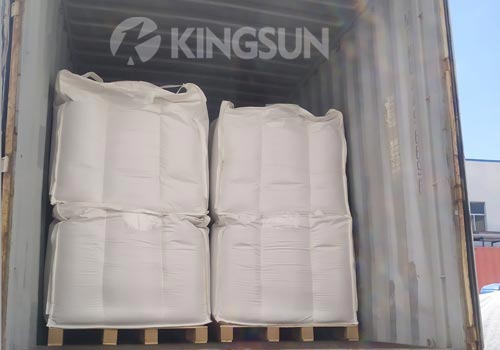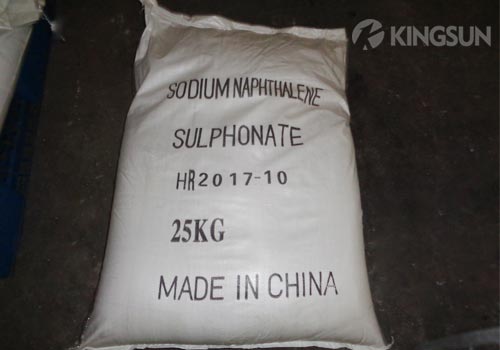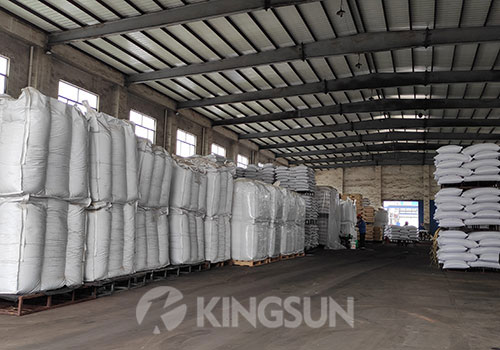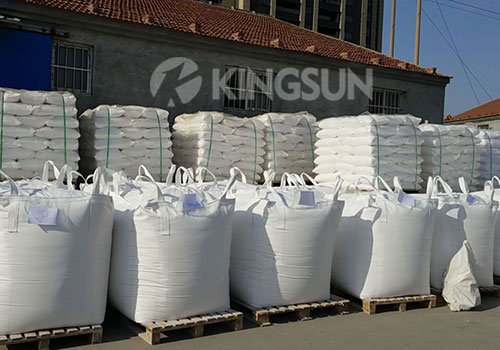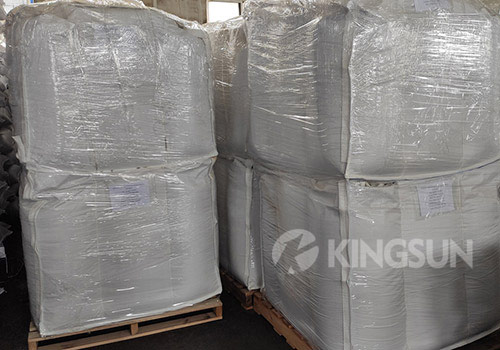SNF-A powder, also known as sodium naphthalene sulfonate formaldehyde condensate, is a naphthalene-based high-efficiency water reducer. It plays a key role in the building materials industry, particularly as a concrete admixture. Its core ingredient, sodium naphthalene sulfonate formaldehyde condensate, is polymerized through a specific process, resulting in the product’s exceptional performance.
In terms of appearance, the normal color of SNF-A powder ranges from pale yellow to brownish yellow, with a uniform hue and no noticeable color variation. This color originates from the molecular structure of its core ingredient, sodium naphthalenesulfonate formaldehyde condensate. The absorption properties of visible light by the long-chain molecules formed by the sulfonation and condensation of naphthalene rings determine its basic hue.
| Type | SNF-A | SNF-B | SNF-C |
| Solid Content (%) ≥ | 92% | ||
| PH Value | 7-9 | ||
| Na2SO4 Content (%)≤ | 5 | 10 | 18 |
| Chlorine Content (%)≤ | 0.3 | 0.4 | 0.5 |
| Net Starch Fluidity(mm)≥ | 250 | 240 | 230 |
| Water Reducing Rate(%) | 26 | 25 | 23 |
| Packing | 25kg pp bag; 650kg Jumbo bag. A customized package is available. | ||
Performance Characteristics of SNF-A
- Extremely high water-reducing rate. Adding SNF-A powder to a concrete mix at 0.5%-1.2% of cement can reduce mixing water usage by 20%-30%, significantly exceeding that of conventional water reducing agents. For example, in C40 concrete, without a water-reducing agent, water usage may be 180 kg per cubic meter. Adding an appropriate amount of SNF-A powder reduces this to 126-144 kg, significantly reducing the water-cement ratio and thus effectively improving concrete strength and durability.
- Significantly enhances concrete strength. Due to its high water-reducing properties, it can effectively reduce the water-cement ratio of concrete, significantly increasing strength. Under the same workability and cement content, concrete incorporating SNF-A powder can increase one-day strength by 50%-70%, seven-day strength by 40%-60%, and 28-day strength by 25%-45%. The increase in later-stage strength (90 and 180 days) is also significant.
- Strong adaptability. It has excellent compatibility with a variety of cement types, including ordinary Portland cement, Portland slag cement, and fly ash cement. It also exhibits good compatibility with other concrete admixtures, such as retarders, early strength agents, and air-entraining agents, allowing for compounding based on specific project requirements.
- Excellent workability retention. This product significantly improves the workability of concrete, increasing initial slump by 120-220mm and achieving a slump retention rate exceeding 75% within 1.5-2.5 hours. This feature effectively addresses the problem of rapid slump loss in commercial concrete during long-distance transportation (30-50 kilometers) and in large-volume, layered pouring (over 2 hours). It also improves concrete’s cohesiveness and water retention, preventing segregation and bleeding. The bleeding rate is typically ≤1.5%, ensuring a smooth surface and dense interior after hardening, and reducing quality defects such as honeycombing and rough surfaces.
- Improves concrete durability. By reducing the water-cement ratio, SNF-A significantly increases the density of concrete, thereby significantly improving its durability. Test data shows that concrete incorporating SNF-A powder can increase its impermeability grade from P6 to P10-P12, increase its freeze-thaw cycle resistance (D-20) from 200 to 400-500 times, reduce its carbonation depth (28 days) by 40%-60%, and reduce its chloride ion permeability by 35%-50%. Especially in projects in coastal areas with high salt fog and in the extremely cold regions of northern China, the use of SNF-A in concrete structures can effectively reduce problems such as steel corrosion and freeze-thaw damage, extending the structural service life from 50 years to 70-100 years and significantly reducing subsequent maintenance costs.
-
Usage Precautions
-
Application Ranges
- Determine the appropriate dosage. The dosage of naphthalene based superplasticizer should be determined through testing based on factors such as the concrete strength grade, cement type, sand and gravel gradation, and construction requirements (such as slump and setting time). A dosage that is too low may not achieve the desired water-reducing and strengthening effects; a dosage that is too high may cause severe bleeding and segregation in the concrete, or prolong the setting time, affecting the construction schedule and the early strength development of the concrete. Generally, the dosage of liquid SNF (based on solids content) is 0.5% to 1.5% of the cement content, and the dosage of solid naphthalene-based water reducer is 0.3% to 1.0% of the cement content.
- Compatibility testing with cement. Cement from different types and manufacturers varies in mineral composition, fineness, alkali content, and other properties, which may result in different compatibility between SNF sodium naphthalene and cement. Before use, a compatibility test between the water-reducing agent and cement must be conducted. Compatibility between the two should be determined by measuring concrete slump, slump loss, setting time, and strength. If compatibility is poor, adjustments can be made by adjusting the water reducing agent dosage, changing the type of cement, or adding an appropriate amount of a conditioning agent (such as sodium gluconate or sodium citrate).
- Control the moisture content of sand and gravel. Sand and gravel are the primary aggregates in concrete, and their moisture content directly affects the actual water usage of the concrete. When using SNF-A in concrete, the moisture content of the sand and gravel should be measured in advance and the water dosage adjusted accordingly to ensure an accurate water-cement ratio. If the moisture content of the sand and gravel fluctuates significantly, failure to adjust the water dosage in a timely manner may result in an overly dry or overly watery concrete mix, affecting its workability and strength.
- Pay attention to the ambient temperature during construction. Ambient temperature significantly affects the performance of naphthalene based water reducing admixtures and the setting and hardening process of concrete. In low-temperature environments (such as winter construction with temperatures below 5°C), the water-reducing effect of naphthalene-based water-reducing agents may be reduced, resulting in significantly prolonged concrete setting time and slow strength development. In these cases, the water-reducing agent dosage can be appropriately increased, or combined with accelerators, antifreeze agents, and other additives to accelerate the setting and hardening of concrete and ensure timely strength growth. In high-temperature environments (such as summer construction with temperatures above 30°C), concrete slump loss can be accelerated. Shading and cooling measures should be implemented to reduce water evaporation. The water-reducing agent dosage should be appropriately adjusted, or a retarding naphthalene-based water-reducing agent should be used to control slump loss.
- Avoid random mixing with other admixtures. Combining SNF superplasticizer with other admixtures (such as accelerators, antifreeze agents, and air-entraining agents) may produce synergistic or antagonistic effects, affecting concrete performance. Before combining admixtures, tests must be conducted to determine the optimal dosage and mixing order for each admixture. Random mixing without prior testing is strictly prohibited. For example, when naphthalene-based water reducer is used in combination with air-entraining agent, the dosage of air-entraining agent needs to be controlled to avoid excessive air content in concrete leading to reduced strength; when used in combination with early strength agent, attention needs to be paid to the adaptability of the two to prevent abnormal setting time or unstable strength development.
- High-strength and ultra-high-strength concrete projects. SNF-A powder plays a vital role in projects such as the core tubes of super-high-rise buildings (C60-C80), main beams of long-span cable-stayed bridges (C50-C60), and high-strength prestressed pipe piles (C80-C100). These projects place extremely high demands on concrete’s compressive strength and elastic modulus. SNF-A powder can help achieve breakthrough concrete strength by reducing the water-cement ratio to below 0.35. For example, when mixing C80 concrete, adding 1.2%-1.5% SNF-A powder can control the water-cement ratio to 0.28-0.32, achieving a 28-day strength of 80-90 MPa, meeting the load-bearing requirements of ultra-high-strength structures.
- Critical parts of large-volume concrete. Large-volume concrete projects such as nuclear power plant reactor foundations, large hydropower station dam core walls, and super-high-rise building basement raft slabs (thickness ≥ 3m) face the risk of thermal cracking caused by hydration heat. SNF-A powder not only reduces the peak hydration heat (15%-20% lower than without a water-reducing agent) by retarding setting (extending the initial setting time by 2-4 hours), but also enhances crack resistance by increasing density. For example, the use of SNF-A powder in a hydropower station dam reduced the maximum internal concrete temperature from 75°C to below 60°C, reducing thermal stress by 30% and successfully preventing the formation of through-hole cracks.
- Large-scale production of ready-mixed concrete mixing plants. In ready-mixed concrete mixing plants, especially for the mass production of ready-mixed concrete with strength grades C30-C60, SNF-A powder is a key water-reducing agent. Its performance stability (water-reduction rate fluctuation within the same batch is ≤2%) ensures consistent workability across different concrete batches, avoiding construction problems caused by fluctuations in water-reducing agent performance. Liquid SNF-A can be precisely added via an automatic metering system, adapting to large-scale production rates of 50-100 m³/h in mixing plants. Currently, over 80% of large and medium-sized commercial concrete mixing plants in China use it as the primary admixture.
- High-end precast component production lines. Precast components such as precast composite slabs, precast shear walls, and high-speed rail track slabs in prefabricated buildings require extremely high early-stage strength and surface quality of the concrete. SNF-A powder can increase the concrete’s one-day strength to 40%-50% of its design strength, shortening mold turnover from 7 days to 3-4 days and improving production line efficiency. Furthermore, its excellent water retention prevents surface defects such as bubbles and exposed reinforcement, raising the appearance qualification rate of precast components to over 95%, meeting the factory-based production and high-precision assembly requirements of prefabricated buildings.
- Concrete engineering in special environments. SNF-A powder also demonstrates its effectiveness in concrete projects operating in specialized environments, such as coastal cross-sea bridges (resistance to chloride ion penetration), urban rail transit in northern regions (resistance to freeze-thaw), and underground integrated pipeline corridors (resistance to seepage and waterproofing). In one coastal cross-sea bridge project, concrete using SNF-A powder achieved a chloride ion diffusion coefficient of only 1.5 × 10⁻¹²m²/s, far below the regulatory requirement of 5 × 10⁻¹²m²/s, effectively preventing corrosion of steel bars by seawater salinity. In a northern subway project, the concrete withstood over 500 freeze-thaw cycles and withstood extreme temperatures as low as -30°C, ensuring safe winter service.
Regarding SNF-A Prices
Generally speaking, fluctuations in raw material costs significantly impact the price of SNF-A powder. Naphthalene and formaldehyde, key raw materials in the production of SNF-A powder, could experience price increases if naphthalene supply decreases due to fluctuations in the petrochemical industry. This would increase SNF-A production costs and, in turn, drive up market prices. However, if production process improvements significantly increase production efficiency and reduce unit production costs, SNF-A prices could also decline somewhat due to market competition.

